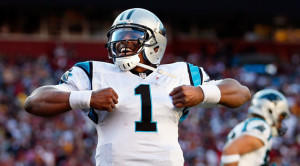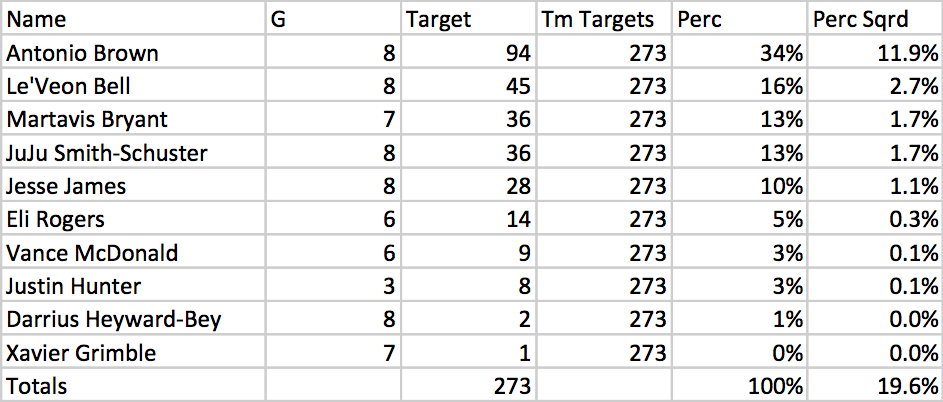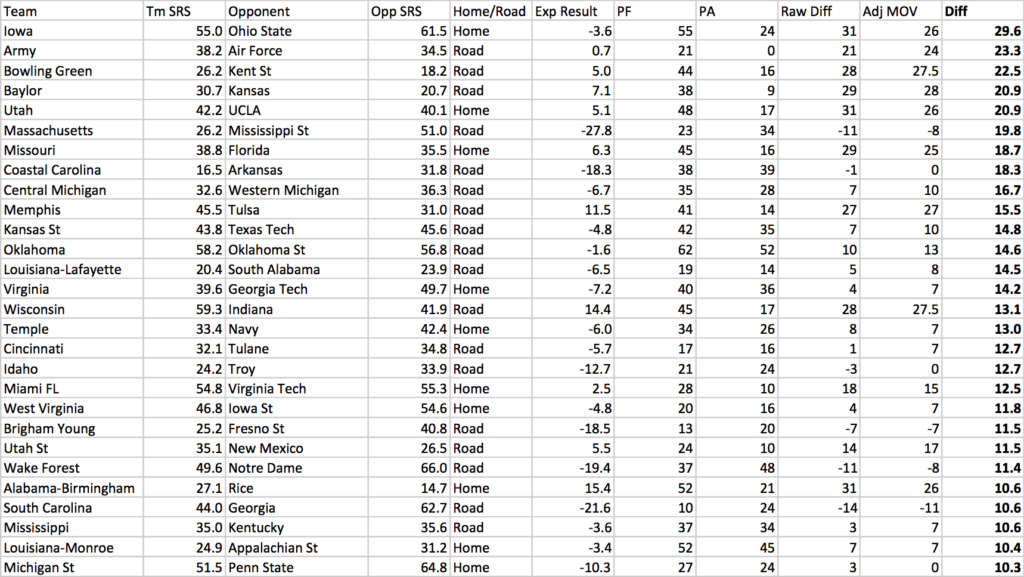For the majority of the NFL, the 2017 season feels pretty similar to the 1978 season.
In 1978, the Rams won 75% of their games and the Redskins went .500.
In 2017, the Rams have won 75% of their games and the Redskins are .500.
In 1978, the Colts had a superstar quarterback (Bert Jones) in the prime of his career, but he was hurt, and the team finished with the worst points differential in the NFL. In 2017, the Colts have a superstar quarterback in the prime of his career (Andrew Luck), but he is hurt, and the team has the worst points differential in the NFL.
The 1978 49ers had the worst record in the NFL. The 2017 49ers have the worst record in the NFL.
In 1978, the Packers won 8 games with a Hall of Fame QB on the sidelines in head coach Bart Starr; the 2017 Packers are 4-4 with a Hall of Fame QB on the sidelines in Aaron Rodgers.
The 1978 Giants finished in last place in the NFC East. The 2017 Giants are going to finish in last place in the NFC East.
The 1978 Jets went 8-8; with a win over the Bucs this Sunday, the 2017 Jets will be 5-5.
Speaking of Tampa Bay, the ’78 Bucs finished last in their division by two games; the ’17 Bucs are currently last in their division by two games.
But you know who was good in 1978? The Patriots, Steelers, Cowboys, and Eagles.
In 1978, New England started 6-2 and won the AFC East. In 2017, New England is 6-2 and in first place in the AFC East.
In 1978, Pittsburgh had a top-5 defense and a Hall of Fame quarterback in Terry Bradshaw; in 2017, Pottsburgh has a top-5 defense and a Hall of Fame quarterback in Ben Roethlisberger.
In 1978, Philadelphia made the playoffs with Ron Jaworski in his second season as quarterback of the Eagles; in 2017, Philadelphia will make the playoffs with Carson Wentz in his second season as quarterback of the Eagles.
In 1978, Dallas made the playoffs with Pro Bowlers at QB, RB, WR, and TE in Roger Staubach, Tony Dorsett, Tony Hill, and Billy Joe DuPree; in 2017, Dallas is 5-3 and on the road to the postseason thanks to star QB Dak Prescott, star RB Ezekiel Elliott, star WR Dez Bryant, and star TE Jason Witten.
In 1978, the Vikings won their division; in 2017, the Vikings are in first place in their division.
In 1978, the Bengals and their 29-year-old franchise quarterback Ken Anderson had a down year; Anderson went 4-8 as the starter. In 2017, the Bengals and their 30-year-old franchise quarterback Andy Dalton is having a down year; Dalton is 3-5 as a starter.
In 1978, the Bears had a losing record and yet still ranked last in pass attempts; in 2017, the Bears have a losing record and yet still rank last in pass attempts.
In 1978, the Falcons were a year removed from greatness on one side of the ball, and sputtered around .500; in 2017, the Falcons are a year removed from greatness on one side of the ball, and are sputtering around .500.
In 1978, the Lions finished 7-9 with an average offense and an average defense; in 2017, the Lions are 4-4 with an average offense and an average defense.
In 1978, the Cardinals had a losing record and an ugly offense; in 2017, the Cardinals have a losing record and an ugly offense.
In 1978, the Raiders disappointed; after an 11-3 season with a great quarterback in Ken Stabler, the team missed the playoffs. In 2017, the Raiders are disappointing; after a 12-3 season with Derek Carr in 2016, the Raiders are on track to miss the postseason.
In 1978, the Chargers had a Hall of Fame quarterback in Dan Fouts, but a 1-4 start and a tough division kept them out of the playoffs. In 2017, the Chargers have a Hall of Fame caliber quarterback in Philip Rivers, but a 1-4 start and a tough division might is likely to leave them out of the playoffs.
The 2017 Browns have lost 8 games, just like the 1978 Browns.
Not all teams are playing like it’s 1978, of course. The Ravens, Jaguars, Panthers, and Texans didn’t exist. The Saints were 7-9 that year, while this year’s Saints are 6-2 and look to be one of the better and more balanced (!) teams in the league. The Broncos were 10-6 with a great defense and a pretty good offense; this year’s Broncos are 3-5 with a terrible offense and a pretty good (and sometimes great) defense. This year’s Seahawks team is 6-3 and has a good chance of making the playoffs thanks to a good offense and a good defense; the ’78 Seahawks had a very good offense but a terrible defense, finishing 9-7 and out of the playoffs. Kansas City was one of the worst teams in the NFL in 1978, but one of the best in 2017. And the Bills were bad in ’78 but good in ’17, while the Dolphins are the reverse.




